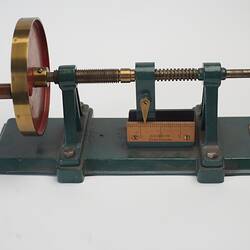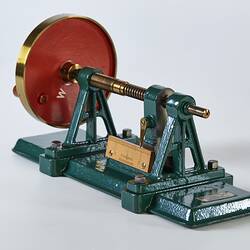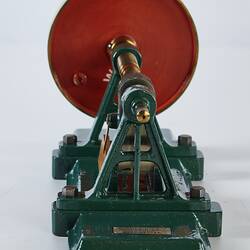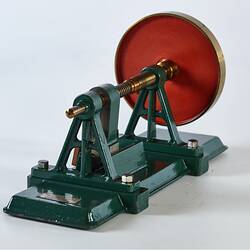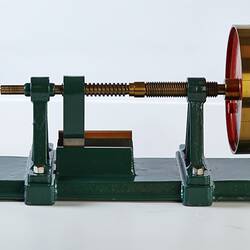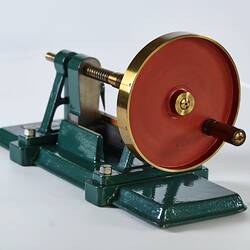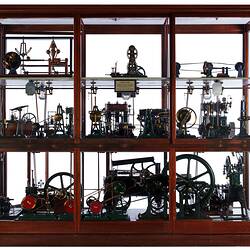Summary
A model of a differential screw, made by G. Cussons, Manchester, England, circa 1914.
George Cussons set up a business in 1876 for manufacture of educational and scientific apparatus, address unknown. By 1886, he was working from 104 Great Clowes Street, Manchester. About 1910 an additional building was erected at backing onto John Street. Later he acquired offices and showrooms on the Strand, London. The range of equipment made expanded to include many types of mechanical and lab apparatus. His son took over the business in 1923.
The model represents how by using a differential screw, a small effort over a large distance may be converted into large effort over a small distance. It also enables small distances to be read to a great degree of accuracy by a suitably graduating hand wheel. For its action, the screw depends upon the difference in pitch of the two opposing threads, both turned upon the one spindle. When the shaft is rotated, the thread which leads through the frame bracket (B) tends to carry the nut (N) bodily along with it in one direction, while the other thread simultaneously tends to move the nut in the opposite direction along the spindle. The result of these actions is that the travel of the indicator attached to the nut, is, during one complete revolution of the hand wheel, the algebraic sum of the two pitches, which is in the model the difference between the pitch of the two threads.
Physical Description
Metal model with green painted frame with metal handwheel painted red.
More Information
-
Collection Names
-
Collecting Areas
-
Acquisition Information
Purchase
-
Maker
G. Cussons, Manchester, Lancashire, England, Great Britain, circa 1914
-
Classification
-
Category
-
Discipline
-
Type of item
-
Object Dimensions
372 mm (Width), 147 mm (Depth), 180 mm (Height), 5.5 kg (Weight)
-
Keywords

